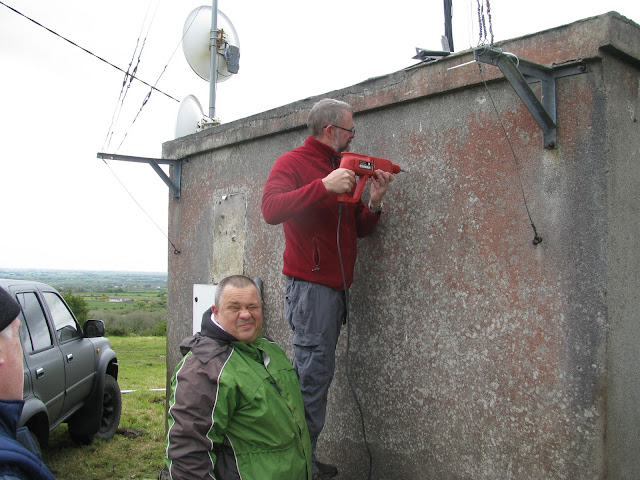With assistance from John MI0AAZ on Team Viewer, the program was initially set up on the Raspberry Pi. Unfortunately, the setting of the Transmit and Receive audio levels were critical and required setting on a spectrum analyser. John McCarthy EI8JA had performed this task on his own Repeater and offered to set these critical levels for us. The Repeater was returned and a decision was taken to load the Pi-Star software on the Raspberry Pi as it was easier to manage and set up.
At the same time Joe, EI3IX, had built a similar system for the Mayo area. It was decided that we would adopt the same Software for his Gateway. The aim was to place the two systems on air together.
Once Pi-Star was installed on both systems it was possible to mimic the settings and they both worked with a few minor problems that were easy enough to rectify. A Skype chat between Mayo, Galway and Northern Ireland enabled final checks and the Gateways were powered within minutes of each other.
The GM350 and the Raspberry Pi booted up together with the status lights indicating that all was well.
Following tests on both Yaesu Fusion and DMR, the system appeared to be connecting to the server and stations were being heard by the system. A typical screen shot from the Pi-Star dashboard is shown below.
The dashboard was well populated in a very short space of time with DMR contacts. Yaesu Fusion was tested later and proved to be functioning well. The Brandmeister Dashboard revealed the connection was functioning properly on both DMR and Fusion.
A look at the network map showed the Gateway positioned in its corrrect location in Galway City.
The map coordinates were interpreted properly on this occasion unlike my DV Mega which was shown about a mile further east from my home location.
Whilst there is not a huge amount to activity in Galway, this system will, at least, bring some activity to those who do go on the air and also provide an opportunity to operate whilst mobile in the car or walking with a handheld radio.
For further information about this project see the EI5DD Blog >> click here
Further information about Digital Radio may also be found on the EI5DD Blog.
For further information about this project see the EI5DD Blog >> click here
Further information about Digital Radio may also be found on the EI5DD Blog.
Special thanks to John Anderson MI0AAZ, John McCarthy EI8JA, and Joe EI3IX who were all involved in the set up and final testing phase of this Gateway.
Parameters and operation: Click>>> HERE
Parameters and operation: Click>>> HERE
Specifications of the Galway City Gateway
Call sign EI2GCD
Location Galway City
Frequency 144.8500 MHz
Time slot 2
Colour code 1
Default DMR Talk Group TG 2722 ( Ireland Calling)
---oo00O00oo---
Specifications of the Mayo Gateway
Call sign EI2DOD
Location 10m East of Castlebar Co. Mayo
Frequency 144.8250 MHz
Time Slot 2
Colour Code 1
Default DMR Talk Group TG 2722 (Ireland Calling)











































